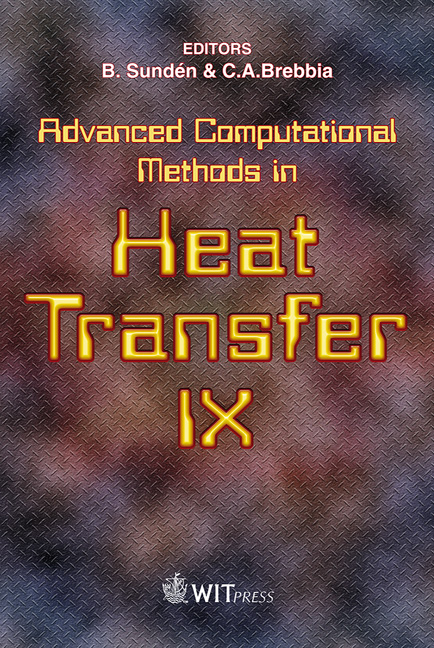Lattice Boltzmann Simulation Of Vortices Merging In A Two-phase Mixing Layer
Price
Free (open access)
Transaction
Volume
53
Pages
10
Published
2006
Size
588 kb
Paper DOI
10.2495/HT060091
Copyright
WIT Press
Author(s)
Y. Y. Yan & Y. Q. Zu
Abstract
Mixing layers are commonly observed in flow fields of many types of industrial equipment such as combustion chambers, chemical reactors, and fluid ejectors. It is important to effectively mix two co-flowing gaseous/fluids streams in such equipment. As the mixing of two fluids is an interface and surface tension dominated process, numerical simulations of the mixing process are generally very complex. The present study is concerned with using the lattice Boltzmann method (LBM) to study vertices merging in a two-dimensional two-phase spatial growing mixing layer. Different velocity perturbations are forced at the entrance of the flow field of a rectangular mixing layer; the initial interface between twophases is evenly distributed around the midpoint in a vertical direction. By changing the strength of surface tension and combinations of perturbation waves, the effects of surface tension and velocity perturbation on vortices merging are investigated. Some interesting phenomena, which have not occurred in a singlephase mixing layer, are observed and the corresponding mechanism is discussed. Keywords: lattice Boltzmann method, vortices merging, mixing layer, numerical simulation. 1 Introduction Vortices behaviours including the formation and merging are commonly observed in engineering applications, such as in combustion chambers, premixers for gas turbine combustors, chemical lasers, propulsion systems, flow reactors, micro mixers, etc. Controlling the formation and evolution of the coherent structure in the mixing layer can improve efficiency of combustion or chemical reaction processes; therefore studies on vortices behaviour in mixing layers have been carried out both experimentally and computationally. Ho and
Keywords
lattice Boltzmann method, vortices merging, mixing layer, numerical simulation.





